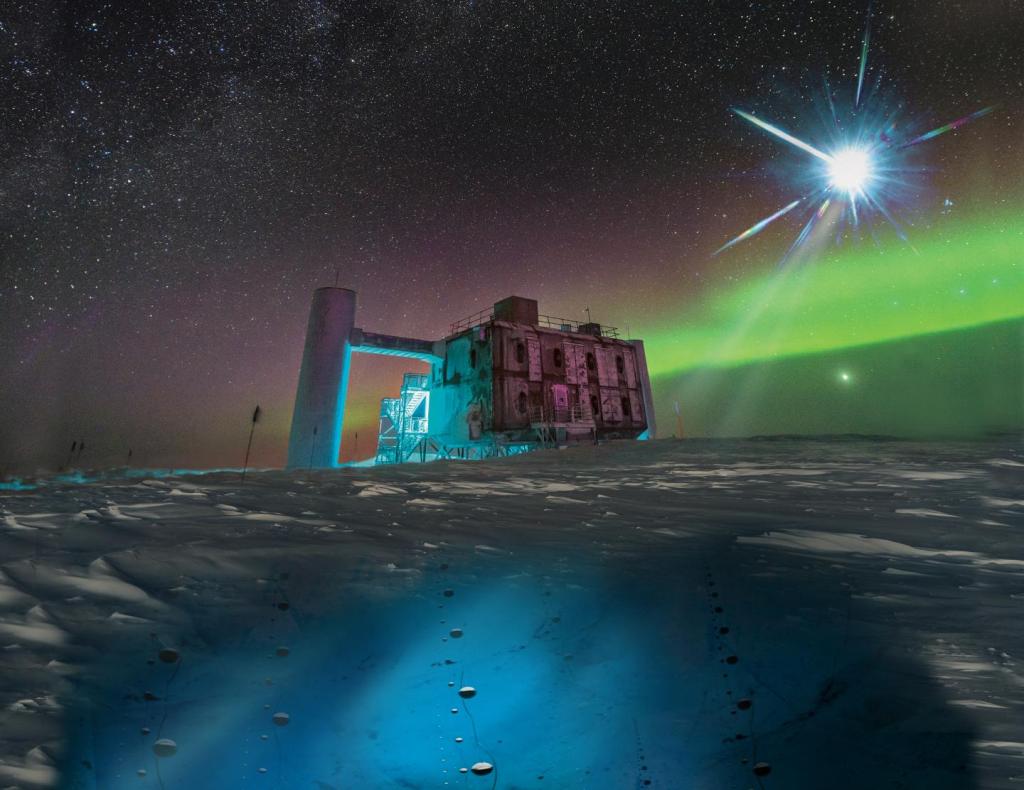In 1937, the Italian physicist Ettore Majorana made a bold prediction: He claimed that certain particles that are their own antiparticles should exist. The first antiparticle had been discovered by accident only a few years earlier in 1932, just four years after the physicist Paul Dirac predicted they should exist. But for the last 80 years, no one has been able to find strong evidence for the existence of an antiparticle-particle hybrid predicted by Majorana—until now.
As detailed last week in Science, a team of physicists at UC Irvine, UCLA, and Stanford has found the first strong evidence of such a particle—known as a Majorana fermion—a discovery that may pave the way for more resilient quantum computers.
Videos by VICE
In physics, fundamental particles fall into one of two classes: bosons or fermions. The distinction between them has to do with their angular momentum, or spin. Each fundamental particle in both classes has an evil twin, an antiparticle that has the exact same mass but opposite electrical charge. When a particle and antiparticle meet, they annihilate and release a spurt of energy.
Majorana’s prediction was that in the class of fermions, which includes protons, neutrons, electrons, and quarks, there should also exist a particle that is its own antiparticle. The caveat was that this Majorana fermion would have no charge, similar to a neutron or a neutrino. In 1956, physicists at the Lawrence Berkeley National Laboratory found the neutron’s antiparticle. That left the neutrino as a viable candidate for the Majorana fermion and experiments based on this hypothesis continue to this day.
There are currently four experiments underway around the world to test the neutrino as a possible Majorana fermion. One, the EXO-200, involves a giant machine full of 110 kilograms of liquid xenon that measures the decay of xenon isotopes. But the challenges involved with these large, complicated and expensive experiments means that results aren’t expected for about a decade.
A few years ago, the physicists at UC Irvine, UCLA, and Stanford realized that Majorana fermions might also be created by manipulating certain exotic materials like superconductors. They set out to give this method a shot.
In this case, what the physicists were looking for are called ‘quasiparticles.’ These entities arise from the collective behavior of electrons in a physical medium, and exhibit some properties of particles, such as momentum, without actually being a particle. A helpful analogy is to think of a bubble in a glass of beer, which is not really an independent thing, but the result of the displacement of the beer by carbon dioxide which nevertheless retains certain observable characteristics as it rises.
In pursuit of these Majorana fermion quasiparticles, the researchers made use of superconducting materials that conduct electricity with 100 percent efficiency, and a magnetic topological insulator, which conducts electricity along its surfaces but not through its middle.
After stacking two thin films of the superconducting material and topological insulator on top of one another, they placed the materials in a chilled vacuum chamber. When electricity was applied, it allowed electrons to glide along the two edges of the materials’ surfaces in opposite directions.
Next, the researchers swept a magnet over the materials, which caused the electrons to slow, stop, and then switch directions, a process which occurred in observable, abrupt steps, rather than all at once. While the magnet was being applied, pairs of Majorana quasiparticles would emerge from the superconducting film and travel along the edge of the topological insulator.
Like the electrons, the Majorana quasiparticles would also slow, stop, and switch directions when a magnet was applied, but at half the rate of electrons. It was this half-speed signature that was the telltale sign of the Majorana quasiparticles’ existence.
“Our team predicted exactly where to find the Majorana fermion and what to look for as its ‘smoking gun’ experimental signature,” Shoucheng Zhang, a physics professor at Stanford, said in a statement. “This discovery concludes one of the most intensive searches in fundamental physics, which spanned exactly 80 years.”
According to Zhang and his colleagues, their discovery could be used to design quantum computers that are resistant to environmental noise in the future. But this doesn’t invalidate the ongoing experiments like the EXO-200, which are searching for actual Majorana particles, rather than quasiparticles.
Read More: New LHC Experiments Might Explain What Happened to All the Antimatter
“The quasiparticles they observed are essentially excitations in a material that behave like Majorana particles,” Giorgio Gratta, a professor of physics at Stanford who was not involved in the experiment, said in a statement. “But they are not elementary particles and they are made in a very artificial way in a very specially prepared material. It’s very unlikely that they occur out in the universe, although who are we to say? On the other hand, neutrinos are everywhere.”
Still, the discovery of what Zhang is calling the “angel particle” is a big deal for particle physics since it provides the first solid evidence for the existence of Majorana fermions.
“This research culminates a chase for many years to find chiral Majorana fermions,” Tom Devereaux, the director of the Stanford Institute for Materials and Energy Sciences where Zhang did the research, said. “It will be a landmark in the field.”
Get six of our favorite Motherboard stories every day by signing up for our newsletter.




